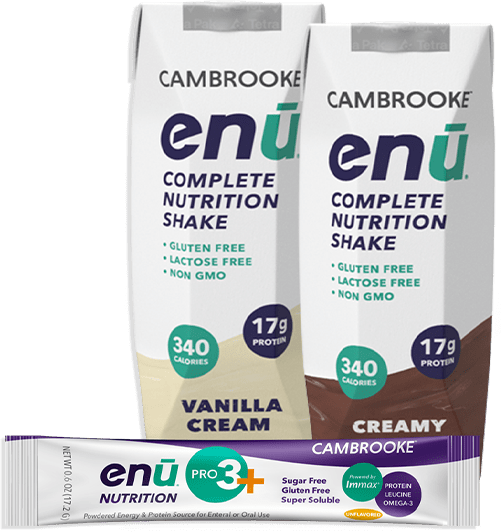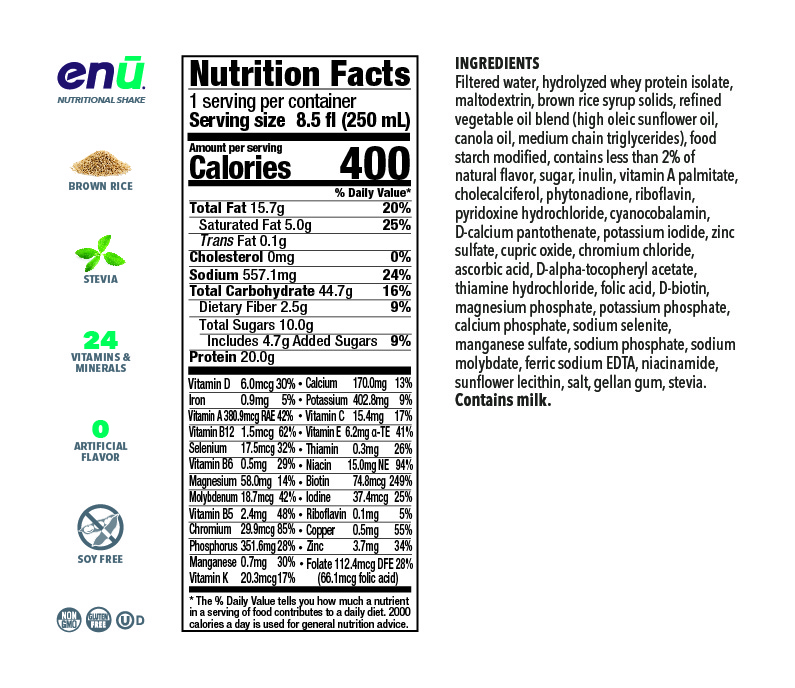
Get a FREE
ENU Intro Pack*
*Just Pay $2.00 Shipping

What Are the Symptoms of Sarcopenia?
Age may come with wisdom, respect, and a wealth of other benefits, but it also tends to bring a number of unpleasant changes as well, especially in the body. The effects of aging on a person’s health are well-documented and, with few exceptions, negative in some way, but there are also instances in which a particular condition can be stopped or reversed with a few lifestyle adjustments. One such case is sarcopenia, an ailment characterized by a loss of muscle mass, but how can you be sure if you have this condition or what you should do about it? Below, the experts at ENU, makers of protein shakes for seniors, will answer some common questions, such as, “What are the symptoms of sarcopenia?” Continue reading to learn more.
Symptoms of Sarcopenia: How Do You Know if You Have Sarcopenia?
While the direct consequences of sarcopenia may seem limited, the truth is that their impact on an older adult’s life can be extensive. First and foremost, the primary symptom of sarcopenia is the slow but steady loss of muscle mass, which can begin as early as a person’s 30s or 40s but which accelerates – and becomes more common – when people are around age 60. Though this symptom alone may not seem all that severe, this loss of mass causes a person to lose much of the strength in their arms and legs.
From a practical standpoint, this change can affect a person’s sense of balance, and it can change their gait or limit their mobility – two factors that can significantly increase a person’s odds of falling and injuring themselves. Furthermore, the difficulty getting around or performing everyday tasks that require some degree of physical strength – opening a jar, for instance – can hamper an older adult’s sense of independence and seriously reduce their quality of life; in other words, from one basic symptom, sarcopenia can cause life-altering changes.
Estimates place the total percentage of older adults with sarcopenia in the U.S. at as high as 45%, with about 30% of those over the age of 60 affected and more than half of those over 80. Although it’s common among seniors, the extent of the symptoms of sarcopenia that a person experiences can vary greatly; for instance, those on bed rest will see a much more rapid decline in muscle mass, while those who are physically active may see little to no loss of muscle, depending on their level of activity. In addition, a person’s age and weight can play major roles in the onset of this condition, as can the presence of a disability or lack of proper nutrition.
Regaining Muscle Mass and Treating Symptoms of Sarcopenia
There’s no denying that the symptoms and weight loss from sarcopenia can be tough to deal with, especially since there is not yet a medication approved for the treatment of this ailment specifically. However, there are treatment options that are very accessible and which can be quite effective at slowing, stopping, or even reversing the effects of the condition. In fact, the two main methods of treating sarcopenia – diet and exercise – are more or less the same as those used to build muscle at any age, though there are a few peculiarities to note for those battling sarcopenia.
Diet
The first thing to consider if you want to stop your sarcopenia symptoms is your diet – more specifically, the amount of protein it contains. A great number of seniors don’t get the Recommended Dietary Allowance of protein for older adults – just over 1/3 of a gram per pound of body weight – and, since protein is the macronutrient needed to build and preserve muscle tissue, these adults can’t fight the muscle-wasting effects of sarcopenia effectively. In addition, the most common vitamin lacking in seniors’ diets, vitamin D, is also linked to muscle strength.
If you don’t get enough of these nutrients, it can make your sarcopenia symptoms even worse, so it’s crucial that you find ways to add protein and vitamin D to your diet; aim for at least half a gram of protein per pound of body weight each day, and you may need to supplement with as much as 50,000 IU of vitamin D per week, depending on your diet. While this degree of dietary change may be difficult, especially considering the lack of appetite often experienced by older adults, you may be able to make the process easier by adding a protein- and vitamin-rich meal replacement shake to your diet; ask your doctor if this option would be right for you.
Exercise
Along with diet, an exercise routine that includes resistance training is the best way to build your strength and muscle mass over time and fight the symptoms of sarcopenia. That said, older adults – particularly those with sarcopenia, who are at greater risk of injury – should consult with a doctor before starting a routine, and it may also be a good idea to work with a qualified personal trainer who can tailor a workout to your current fitness level. Not only will this make exercising safer, but it will also help you progress more quickly and stay motivated from week to week.
Try an ENU Protein Shake for Seniors to Fight the Symptoms of Sarcopenia
Though staying healthy can often get more difficult as we age, there’s no reason for seniors to settle for the loss of strength that comes with sarcopenia. By adding healthy sources of protein like ENU shakes and nutritional powders, you can easily increase your intake of key nutrients to improve the results of exercise and build new muscle mass. To learn more about how ENU nutritional shakes can help seniors meet their health and fitness goals, visit us online or call (855) 266-6733 today.














